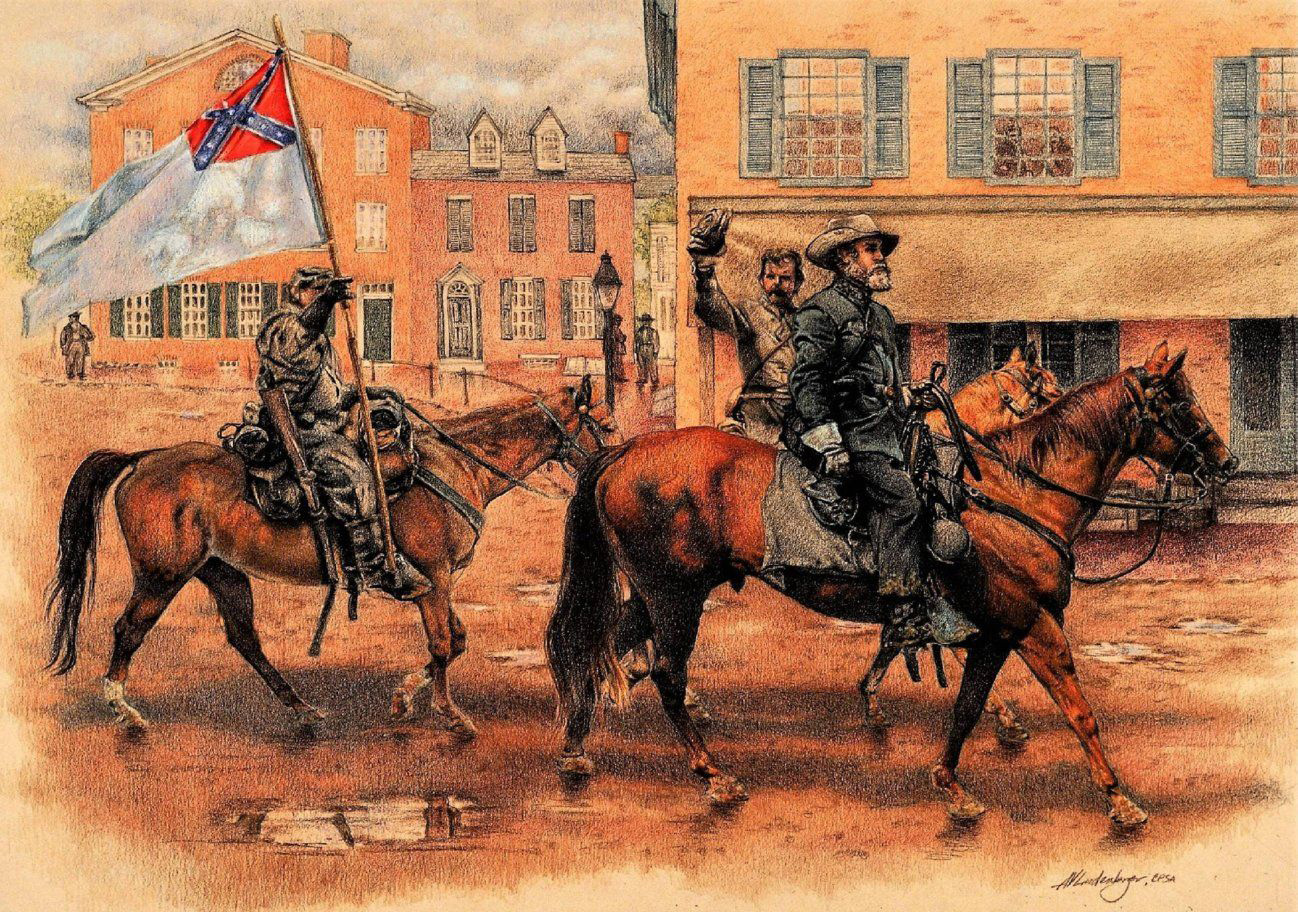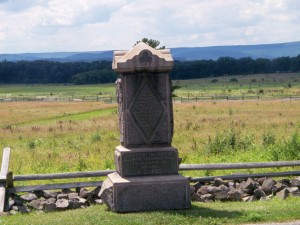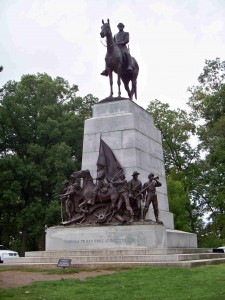Tag: Confederate

The Confederate Conquest of Gettysburg – How The Town Was Taken
February 28, 2024Southern Victory and the Conquest of Gettysburg
The Invasion Begins
After his success at Chancellorsville, Virginia in May 1863, General Robert E Lee led his army through the Shenandoah Valley to begin his second invasion of the North—what would later be known as the Gettysburg Campaign. Lee wanted to move the focus of the summer campaign away from beleaguered northern Virginia, and to strike a blow against Union morale by penetrating as far north as Harrisburg.
Union Brig. General Alexander Schimmelfennig
July 15, 2014
History is to be found everywhere in the town of Gettysburg. In addition to the monuments, plaques & cannons, useful tools called “Wayside Markers” are also available for the serious or casual student of the battle. A great deal of valuable insight may be obtained by paying careful attention to these markers as you visit the area.
On such marker can be found at the former home of Henry & Catherine Garlach – the address being 319 Baltimore Street.
This marker relates the story of Union Brig. General Alexander Schimmelfennig who, on July 1, 1863, found himself wounded & riding through the town desperately trying to avoid capture (or worse) by the advancing Confederates.
With his horse shot from underneath him, General Schimmelfennig realized that he would not make it back to the Union lines. He quickly sought shelter under a drainage ditch cover behind the Garlach home.
Under cover of darkness the General moved out from the cover & squeezed himself between a wood pile & a hog swill barrel. Mrs. Garlach discovered him while feeding the hogs & managed to discreetly supply him with food & water during his concealment.
General Schimmelfennig was not able to return to his men until the last of the Confederate sharpshooters left the town on July 4th.

1st Delaware Monument
August 16, 2013 The State of Delaware supplied two regiments for the Union at the Battle of Gettysburg. One of these, the 1st Delaware, had the opportunity to spearhead a counter-charge on July 3rd as the the attack of General Pickett faltered at the wall these men were defending. This counter-assault by the men from Delaware resulted in the capture of several Confederate battle flags & many prisoners. The Battle of Gettysburg was to cost this unit 77 casualties & at battle’s end they were led by a lieutenant who was the highest ranking officer left. Their memorial was dedicated on June 10, 1886 & may be found on Hancock Avenue at the wall over which they charged that July day 150 years ago.
The State of Delaware supplied two regiments for the Union at the Battle of Gettysburg. One of these, the 1st Delaware, had the opportunity to spearhead a counter-charge on July 3rd as the the attack of General Pickett faltered at the wall these men were defending. This counter-assault by the men from Delaware resulted in the capture of several Confederate battle flags & many prisoners. The Battle of Gettysburg was to cost this unit 77 casualties & at battle’s end they were led by a lieutenant who was the highest ranking officer left. Their memorial was dedicated on June 10, 1886 & may be found on Hancock Avenue at the wall over which they charged that July day 150 years ago.
The Florida State Memorial
November 20, 2011The ranks of Confederate soldiers at Gettysburg represented all of their eleven states—even Florida! Not many Floridians made that long trek, just 700 men in three small regiments: the 2nd, the 5th, and the 8th. On the Centennial of the battle, July 3, 1963, the Florida State Memorial was dedicated to these soldiers and the 445 (64 percent!) of them reported as casualties. You can find this beautiful granite monument on West Confederate Avenue.
The Virginia Monument
October 18, 2011The Civil War saw our country split in two—North and South, Union and Confederate—but regardless of who was right, both sides were fighting for their beliefs, their families, and their way of life. It’s impossible to look at it as good guys vs. bad guys because it isn’t that simple. Good men fought and died on both sides of the battlefield, and it is only right to honor them. That is why Gettysburg features statues of both Union heroes, like the Pennsylvania State Memorial, and statues of Confederate heroes, like The Virginia Monument.
The Virginia Monument was the first of the Confederate monuments to be built at Gettysburg, and it remains the largest. It was commissioned on March 9, 1908 and cost $50,000, which, in today’s money, is the equivalent of $885,000. That’s pretty expensive! It towers forty-two feet above Seminary Ridge, just East of Spangler Woods and accessible by West Confederate Ave.
The primary sculpture is a 14-foot bronze portrait of General Robert E. Lee, mounted upon his horse Traveller. Lee rides high on a 28-foot granite pedestal with seven Confederate soldiers beneath him. Their bronze eyes survey the field before them: site of the famous infantry assault of Pickett’s Charge. On the other side of the field is Cemetery Ridge, where the Union lines made their stand. There, a statue of General George Meade meets Lee’s gaze.
The seven Confederate soldiers, according to sculptor Frederick William Sievers, are representative of the men of all walks of life who left home and trade behind to serve in the military. First, there are two riflemen, one symbolic of a professional man, the other a mechanic. Beside them, a man who was an artist now aims a pistol. In the center, a boy on horseback raises the Confederate flag. To his right, a businessman swings a bayonet, a farmer raises a rifle, and a youth sounds a bugle call. These smaller portraits remind us that they were more than just soldiers.
The monument, minus the sculptures, was installed in 1913 and dedicated at the Gettysburg reunion—the 50th anniversary of the battle, which saw over 50,000 veterans gathered together from both sides of the war. The completed statue was unveiled in 1917 by Miss Virginia Carter, General Lee’s own niece, and presented by Henry C. Stuart, the governor of Virginia.
To visit this remarkable piece of history, plan your trip to Gettysburg Battlefield Tours today!
